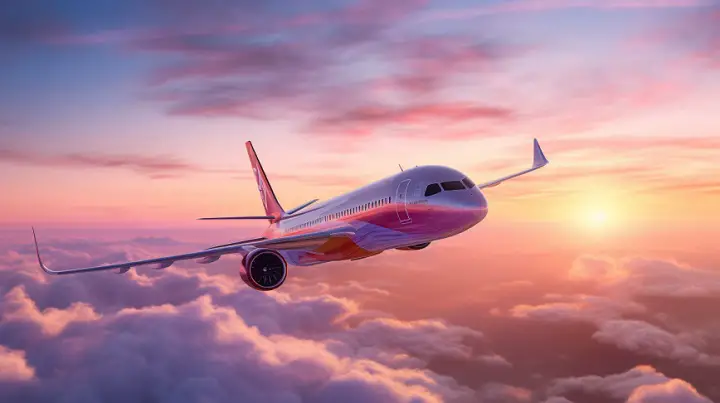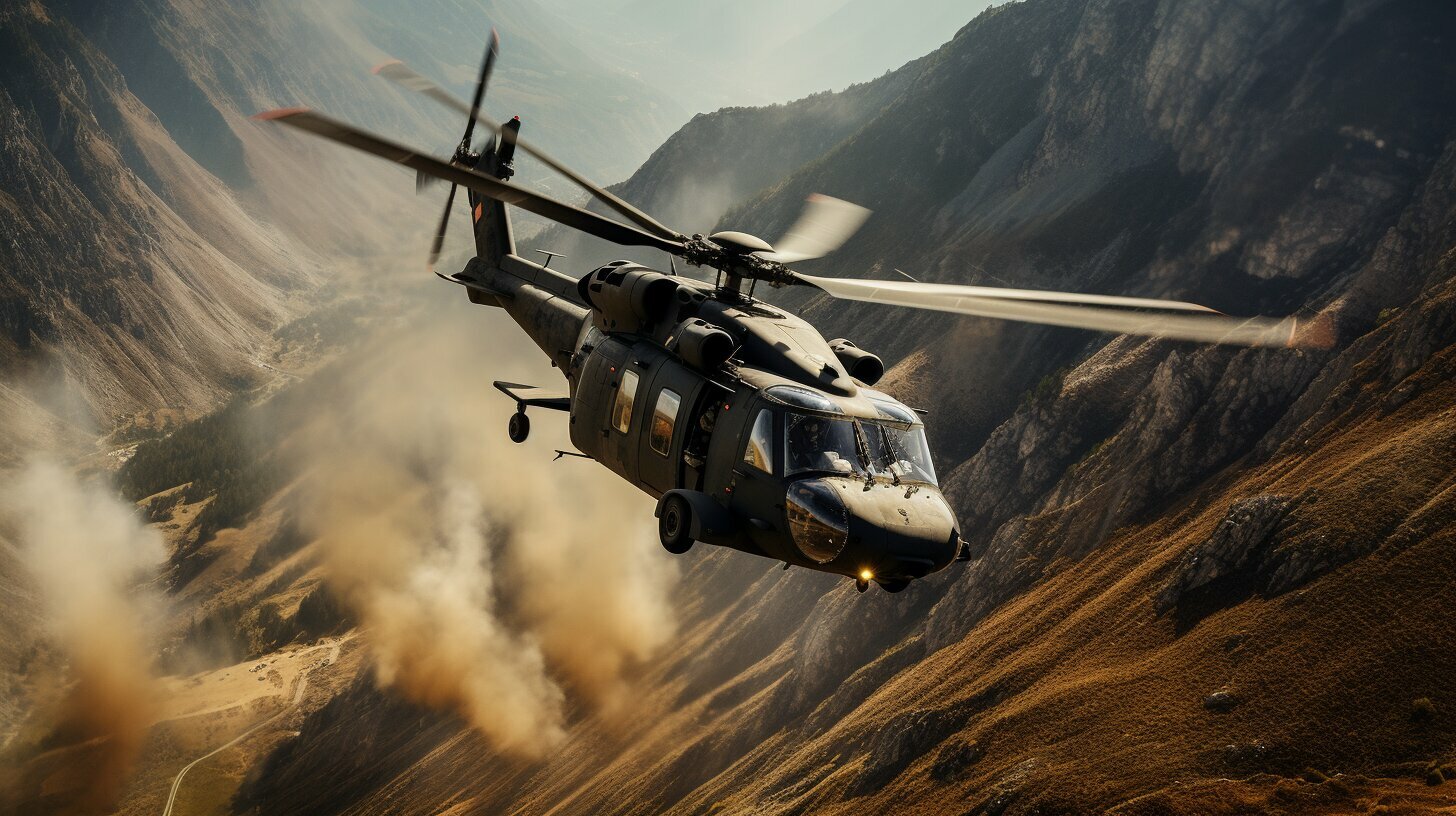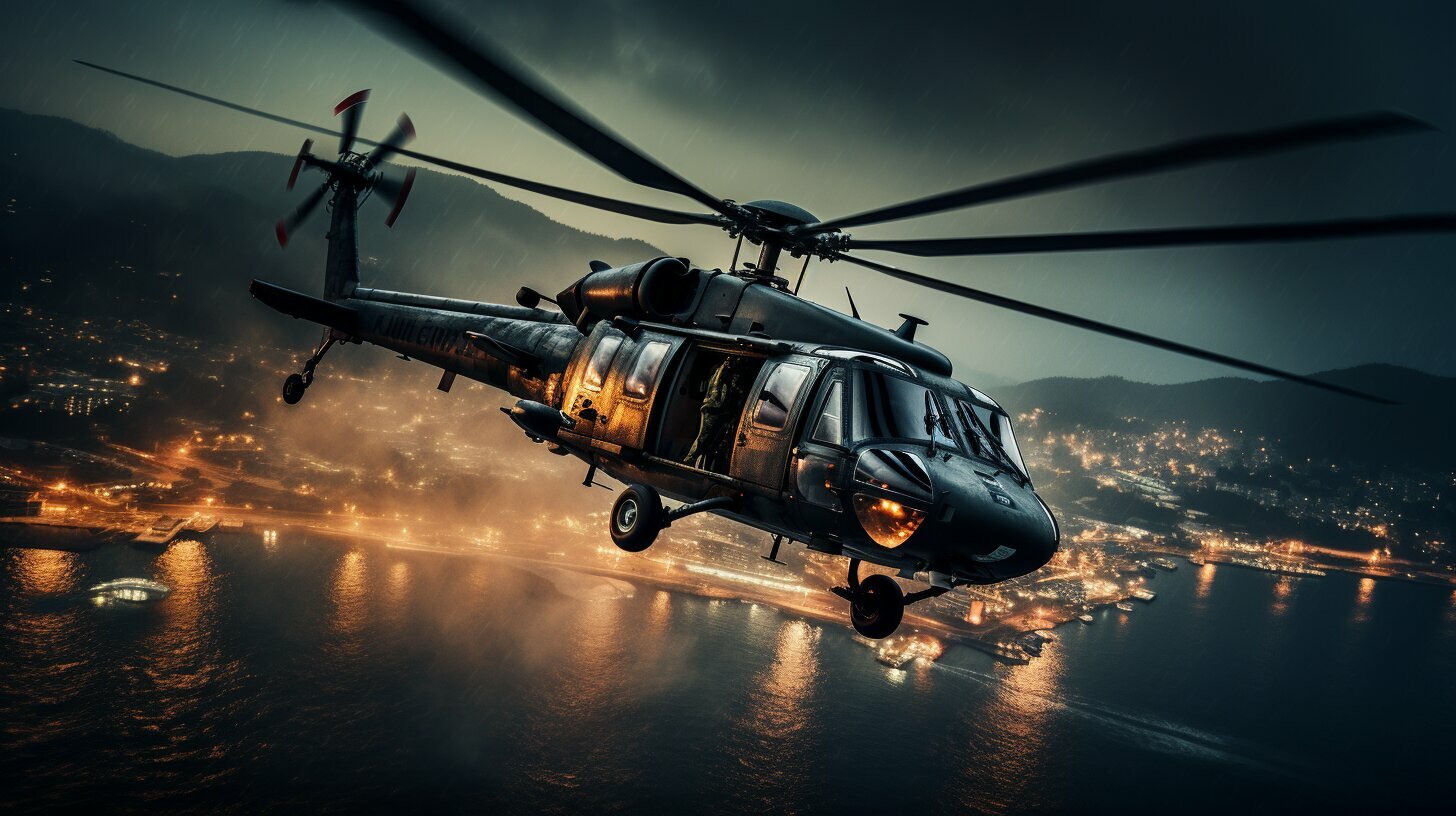
What Are Helicopters Used For? Discover Their Versatile Applications
Helicopters are not only fascinating aircraft, but also remarkably versatile, capable of fulfilling a wide range of roles in various sectors. From military and commercial applications to emergency services and media, helicopters have proven their usefulness in many areas. In this article, we will explore the different ways in which helicopters are used.
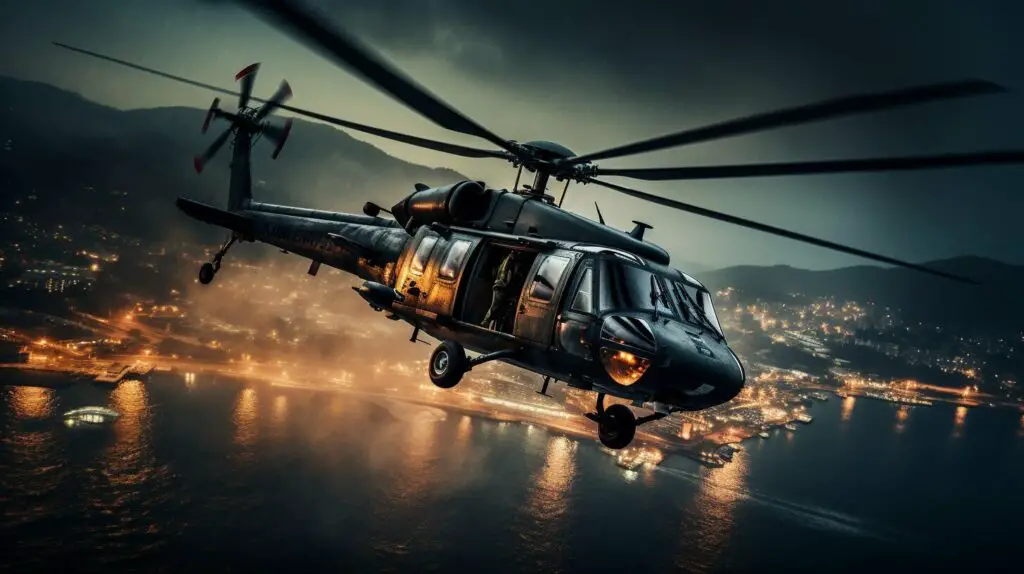
Helicopter Transportation
Helicopters have been used for transportation purposes since their invention. With their unique ability to take off and land vertically and fly in any direction, helicopters can access remote and hard-to-reach locations. These versatile aircraft are used for both civilian and military transportation needs.
In the civilian sector, helicopters are often used for medical evacuations, providing a fast and efficient means of transport for injured or critically ill patients. They are also used for transferring personnel and equipment to offshore oil rigs, remote construction sites, and other locations where traditional transport methods are not feasible.
| Examples of Civilian Helicopter Use for Transportation: | |
|---|---|
| Medical Evacuations | Transporting critically ill or injured patients to hospitals quickly |
| Offshore Transport | Transporting personnel and equipment to offshore oil rigs and other remote sites |
| Corporate Travel | Providing VIP transport for corporate executives and employees |
In the military, helicopters are used for troop transportation and movement of supplies to the front lines. Military helicopters can be fitted with various weapon systems to provide support during combat operations. They can also be used for reconnaissance, allowing commanders to survey the battlefield from the air. Overall, helicopters provide a unique and essential mode of transportation for a diverse range of applications in both civilian and military sectors.
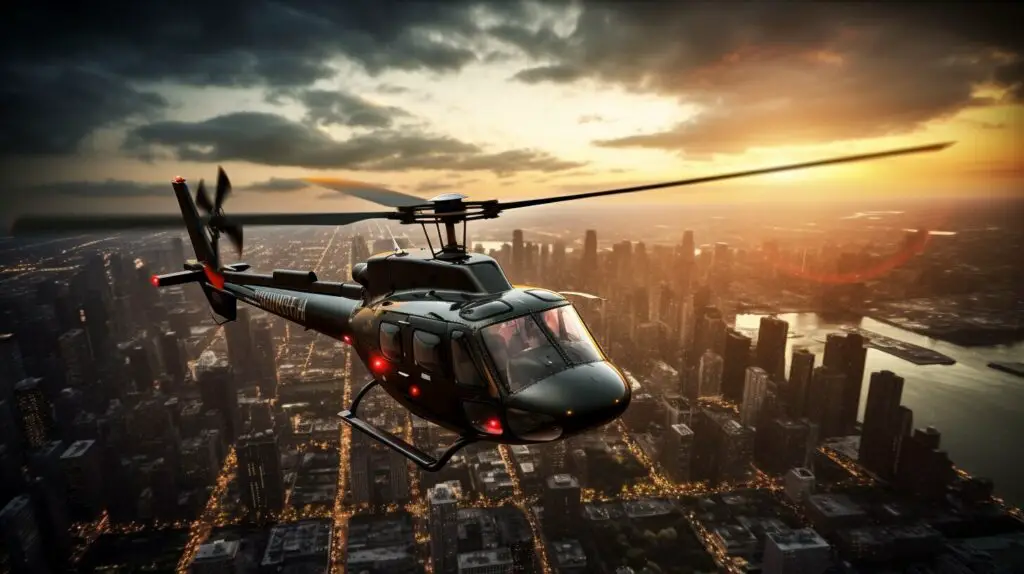
Search and Rescue Missions
Helicopters are particularly well-suited for search and rescue (SAR) operations, as they can quickly and efficiently reach remote or hard-to-access areas. SAR teams rely on helicopters to provide aerial support during emergencies, such as natural disasters, mountain rescues, and maritime accidents.
Helicopters have a unique ability to hover in place, making it easier for SAR teams to rescue injured or stranded individuals. They can also transport equipment and personnel, lowering them to the ground or deploying them from the air. In addition, helicopters are equipped with advanced navigation and communication systems, which help SAR teams locate and communicate with victims.
Helicopters are also used for medical evacuation (medevac) missions, providing rapid transport for critically injured or ill individuals. These missions are often time-sensitive, requiring helicopters to quickly transport patients to hospitals or medical facilities.
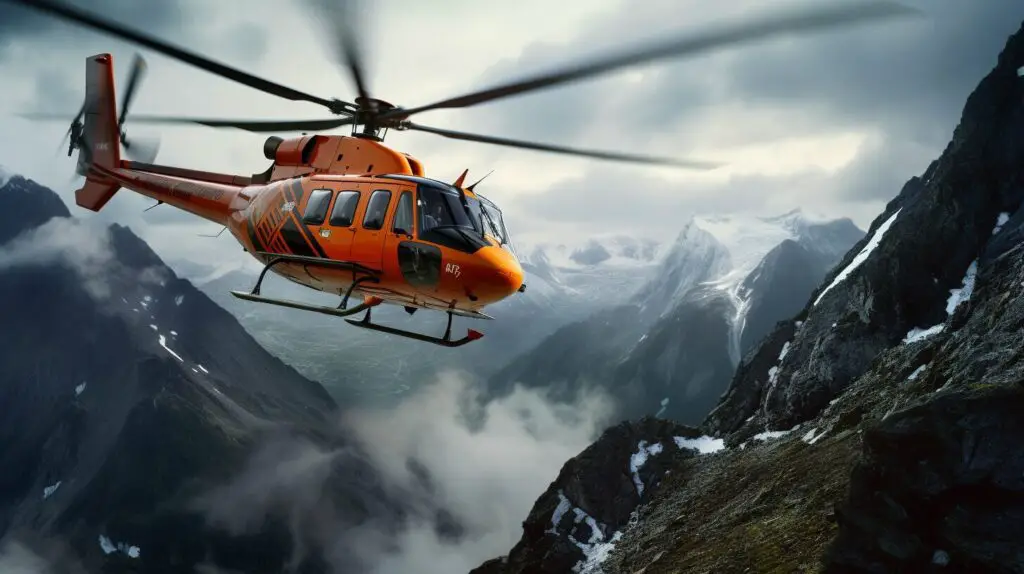
“Helicopters have a unique ability to hover in place, making it easier for SAR teams to rescue injured or stranded individuals.”
Aerial Surveys
Helicopters play a critical role in conducting aerial surveys, providing a versatile and efficient platform for a range of applications. One of the primary uses of helicopters is environmental assessment, which allows remote and inaccessible areas to be inspected quickly and with great detail.
Helicopters equipped with specialist equipment, such as LIDAR (Light Detection and Ranging), can capture data on topography, vegetation, and other features in extraordinary detail, making them invaluable in supporting environmental studies and conservation efforts.
Another important use of helicopters in aerial surveys is for mapping and surveying. Again, the versatility of helicopters makes them ideal for this application, with the ability to cover large areas, often under challenging terrain and weather conditions.
| Application | Description |
|---|---|
| Environmental Assessment | Allows remote and inaccessible areas to be inspected quickly and with great detail. Ideal for supporting environmental studies and conservation efforts. |
| Mapping and Surveying | Helicopters are ideal for mapping large areas under challenging terrain and weather conditions, providing accurate and detailed survey data. |
| Surveillance | Helicopters equipped with cameras and other sensors can provide a platform for surveillance, making them ideal for law enforcement, security, and other applications. |
Finally, helicopters can also be used for conducting surveillance in a range of applications, from law enforcement and security to monitoring of infrastructure and critical facilities. Equipped with state-of-the-art cameras and other sensors, helicopters provide a stable and versatile platform for observing activity and gathering intelligence from the air.

Firefighting
One of the most critical applications of helicopters is in firefighting operations. Helicopters provide a speedy and effective way to respond to fires, particularly in rugged terrain and hard-to-reach areas. The aerial support that helicopters offer greatly enhances the ability of ground crews to contain and extinguish wildfires.
Water bombing: Helicopters equipped with tanks or buckets drop water or fire retardant chemicals on the fire to prevent its spread. This method of water bombing is highly efficient and can be targeted to specific areas quickly.
Aerial support: Helicopters also provide aerial support to ground crews by providing them with real-time information about the fire’s behavior, size, and direction of spread. This feedback is vital in creating a plan of action to combat the fire effectively.
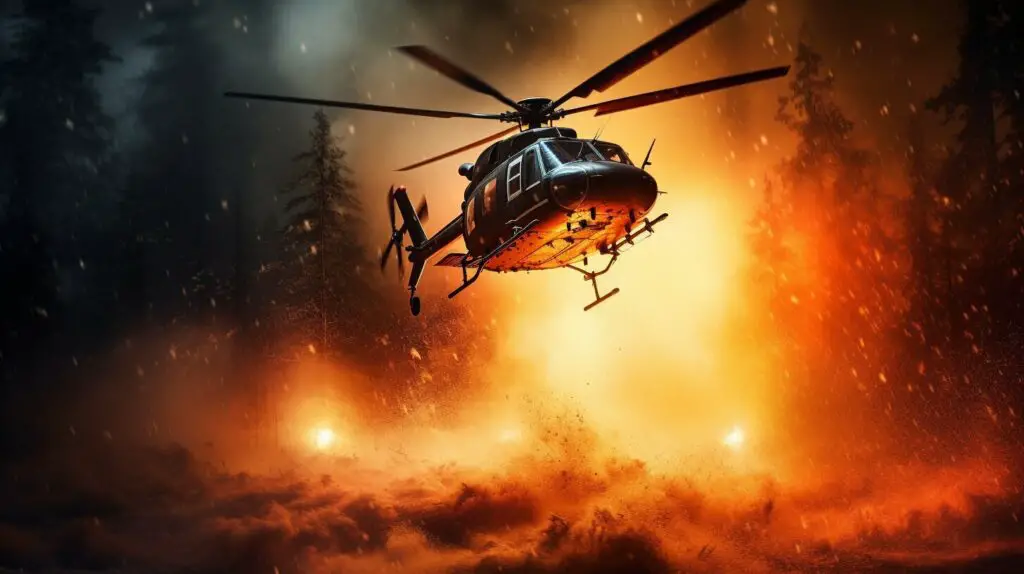
“Helicopters are a vital tool in firefighting operations, providing a swift and effective response to fires across rugged terrain and hard-to-reach areas”
Military Operations
Helicopters have been an essential part of military operations for decades, providing invaluable support in various missions around the world.
Military Applications
Helicopters are used for a variety of military applications, from troop transportation to combat support and reconnaissance. With their ability to hover and maneuver quickly in any direction, helicopters are especially useful in complex terrain and urban environments. They are also capable of operating in adverse weather conditions, making them a reliable asset in any situation.
In addition to transportation, helicopters provide air support to ground forces with their firepower and precision. Helicopters equipped with advanced radar technology and sensors can detect enemy movements from miles away, providing intelligence to military commanders in real-time.
Notable Examples
One of the most famous military helicopter models is the AH-64 Apache, a twin-engine attack helicopter that has been utilized in various conflicts, including the Gulf War and the war in Afghanistan. With its advanced avionics and weapons systems, the Apache is a formidable weapon in combat.
The UH-60 Black Hawk is another iconic military helicopter, widely used for troop transportation, medical evacuation, and search and rescue missions. The Black Hawk has a spacious cabin and can transport up to 11 fully equipped soldiers or more than 20 passengers.

Future Developments
The military continues to invest in the development of new helicopter technologies to enhance their capabilities. Future models are expected to have increased range, speed, and payload capacity, as well as advanced sensors and communication systems for improved situational awareness.
VIP and Corporate Transport
Helicopters provide a unique and efficient means of transportation for high-profile individuals and business executives. VIP transport services offer a personalized and secure travel experience, ensuring privacy and convenience for their clients.
Corporate transport is another area where helicopters excel, providing a quick and efficient means of travel for business meetings or site visits. Helicopters offer the benefit of accessing remote locations that may not be easily accessible by ground transportation.
Helicopter transport allows executives to maximize their time by avoiding traffic congestion and reducing travel time. The versatility of helicopters allows for customization of flights to meet the unique needs and schedules of their clients.
For a high-end experience, many helicopter companies offer luxury interiors and amenities in their VIP and corporate transport services. These can include comfortable seating arrangements, refreshments, and entertainment systems.
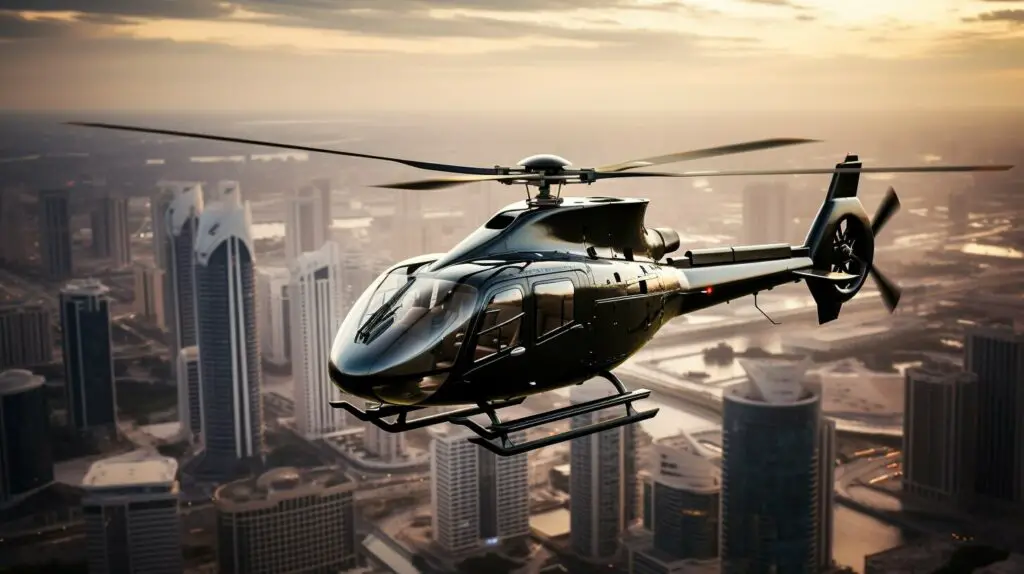
Offshore Operations
Helicopters are widely used in offshore operations, providing efficient and safe transportation of personnel and equipment to remote offshore locations. With their speed, versatility and reliability, helicopters have become an integral part of offshore operations, particularly in the oil and gas industry.
Offshore oil rigs and platforms are often located far from the shore, and the only way to access them is by air or sea. As such, helicopters are used to transport personnel, supplies, and equipment to and from offshore installations. Helicopters can land on small pads or decks, making them ideal for operations in confined spaces.
Helicopters are also used for medical evacuations from offshore platforms in case of emergency. In such situations, every second counts, and a helicopter’s ability to quickly transport a sick or injured person to the nearest medical facility can be the difference between life and death.
Offshore oil and gas exploration and production involves a range of complex and hazardous activities, such as drilling, well intervention, and maintenance. Helicopters are used for a range of support operations in these activities, such as delivering materials and equipment to offshore platforms, transporting workers to and from offshore installations, and conducting environmental surveys of offshore rigs and pipelines.
Why is helicopter transportation preferred in offshore operations?
There are several reasons why helicopter transportation is preferred in offshore operations.
- Firstly, helicopters provide a quick and reliable means of transportation to offshore installations, saving valuable time and resources.
- Secondly, helicopters can land on small pads or decks, making them ideal for operations in confined spaces.
- Thirdly, helicopters are highly versatile and can be used for a range of support operations in offshore activities, including transportation of personnel, equipment, and supplies, environmental surveys, and medical evacuations in case of emergency.
Law Enforcement
Helicopters have proven to be an essential tool for law enforcement agencies around the world. Their mobility and versatility make them a valuable asset in various law enforcement activities, including surveillance, pursuit, and tactical operations.
Helicopters provide law enforcement agencies with a bird’s-eye view of the situation on the ground. With the ability to fly at low altitudes and hover in place, helicopters can observe criminal activity without being detected. This allows law enforcement to gather valuable intelligence on criminal organizations and activities.
Helicopters are also used for pursuit operations, allowing law enforcement to track and intercept fleeing suspects. In high-speed chases, helicopters can travel faster than ground vehicles and keep the suspect in sight, providing updates to ground units in real-time.
During tactical operations, helicopters provide law enforcement with an aerial vantage point, allowing them to coordinate and direct operations from above. Helicopters can also transport SWAT teams and other specialized units to the scene quickly and safely, avoiding roadblocks and traffic congestion.
Overall, helicopters have revolutionized law enforcement activities, providing a tactical advantage to law enforcement agencies. As technology continues to advance, so does the role of helicopters in law enforcement, ensuring safer communities for everyone.
News and Media Coverage
Helicopters are a common sight in news coverage, providing unique aerial perspectives and capturing footage of events that would otherwise be impossible. In fact, helicopters have become a staple in the media industry, playing a vital role in delivering breaking news to the public.
One of the most notable uses of helicopters in news and media is during live broadcasts of major events, such as sports games, parades, and political rallies. Helicopters provide overhead shots of the action, giving viewers a bird’s eye view of the scene.
Additionally, helicopters are often used in search and rescue missions, providing the media with footage of rescue operations from a unique vantage point. For example, during natural disasters like hurricanes and earthquakes, helicopters are used to transport journalists and camera crews to affected areas, allowing them to capture footage of the devastation from above.
“Helicopters provide overhead shots of the action, giving viewers a bird’s eye view of the scene.”
Another important use of helicopters in news and media is for traffic reporting. Helicopters are used to monitor traffic flow and report accidents or road closures to drivers listening to radio broadcasts.
Overall, helicopters play an essential role in news and media coverage, providing unique perspectives and capturing footage that would otherwise be impossible.




